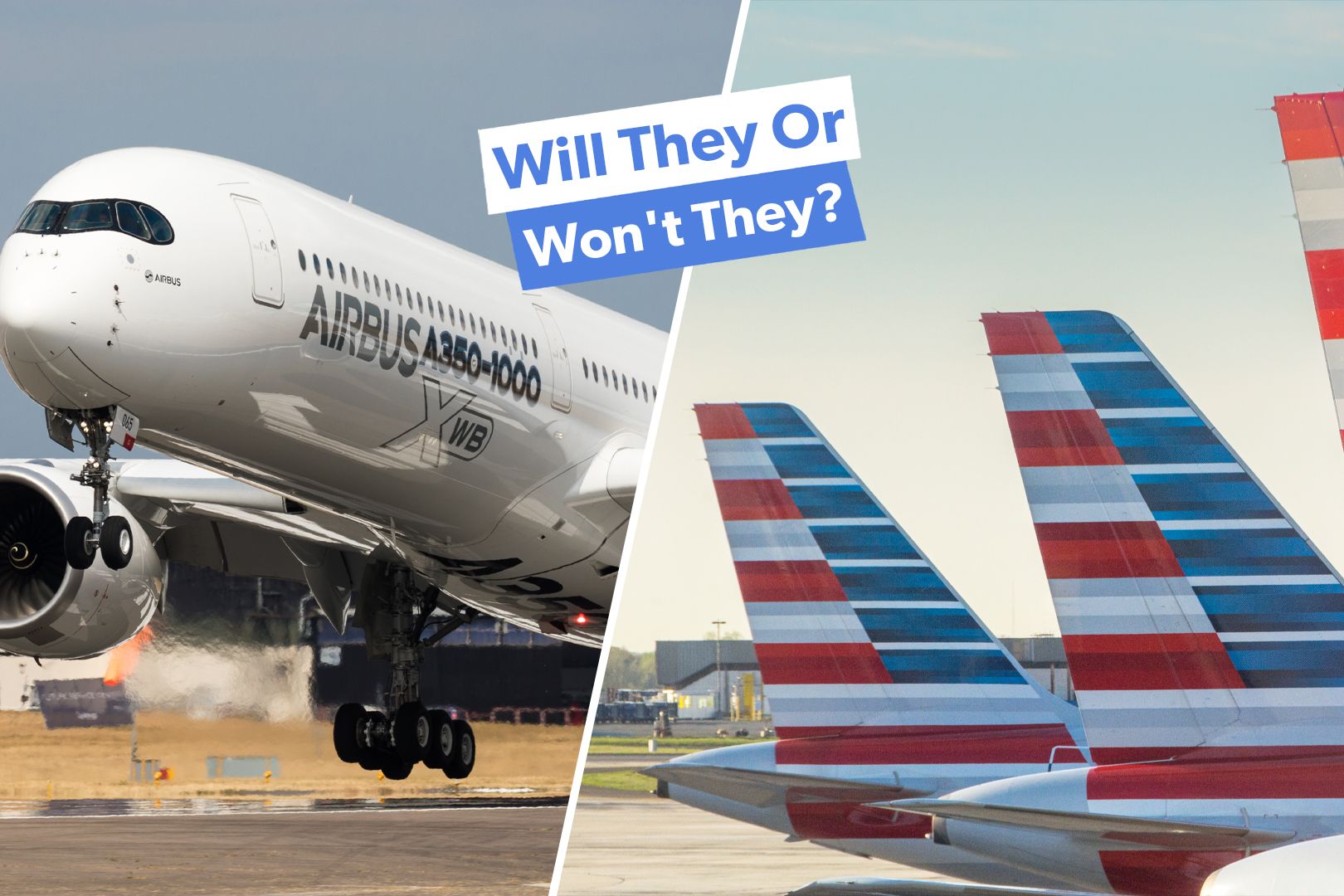American Airlines has long been a major player in the global aviation industry, continually seeking to optimize its fleet to balance operational efficiency, passenger comfort, and profitability. Among the different aircraft models reviewed and integrated into the lineup over the years, the Airbus A350 stands out as particularly complicated. Dive in for a look at the A350’s on-and-off journey with American Airlines.
The initial order American Airlines' A350 order, originally placed by US Airways in 2005, was a strategic move to modernize its long-haul fleet and improve fuel efficiency. The A350 was chosen since the merged fleet was predominantly made up of A320s and A330s. Simple Flying reported that Airbus also provided a $250 million loan to assist with US Airways's restructuring .

However, American Airlines' merger with US Airways in 2013 led to a significant shift in fleet strategy. The new, larger American Airlines had overlapping aircraft orders, including the A350-800s that US Airways had ordered. American Airlines initially decided to switch all the orders for the A350 from the -800 type to the -900 type, causing Airbus to drop the variant completely.
As the airline reassessed its future fleet needs, it decided to prioritize streamlining operations and simplifying its fleet. This led American Airlines to favor Boeing aircraft. The Boeing 787, already in service with American, offered similar range and efficiency benefits to the A350, making it a more practical choice given the airline's focus on fleet uniformity and the operational advantages of flying a larger number of aircraft of the same type.
The cancellation: strategic realignment Currently, American's wide-body aircraft are all from Boeing: Aircraft type Number Boeing 777-200ERs 47 Boeing 777-300ERs 20 Boeing 787-8 37 Boeing 787-9 22 In 2018, American Airlines officially canceled its order for the Airbus A350 . The decision was presented as a strategic realignment rather than a loss of faith in the A350. The airline cited fleet simplicity as the key reason for deciding to double down on the Boeing 787 Dreamliner, which had already become the cornerstone of its long-haul operations.
From American's wide-body aircraft fleets listed above, the cancellation of the A350 seems like a reasonable move. American Airlines is the largest airline by fleet size, with over 1,000 aircraft. The cancellation was partly affected by the financial realities following the merger.
The acquisition had resulted in enormous debt, which American Airlines was working to pay back . Given the availability of 787s, it seemed unnecessary to invest in a new fleet of A350s, as well as the accompanying training and maintenance costs. Furthermore, the operational advantages of keeping with the 787 were obvious.
The aircraft's compatibility with other Boeing models in American's fleet, including the 777s, enabled more flexible pilot and crew scheduling, lower training costs, and more efficient maintenance operations. The 787's performance on long-haul routes met expectations, which reduced the need for the A350. Rumors for 2023: A possible revival? Fast forward to 2023, when speculations began to surface in the aviation industry that American Airlines would reconsider the Airbus A350.
These allegations came as the airline faced increasing pressure to update its fleet while also addressing the continued issues of high fuel prices and environmental concerns. The A350, with its improved fuel efficiency and lower carbon emissions, appeared to be an appealing candidate for meeting these requirements. Aviation watchdog JonNYC wrote on X (formerly known as Twitter) that an announcement, at least for new smaller planes, might come as early as March 4, 2024, during American Airlines' forthcoming Investor Day.
It turned out the order was for 260 new aircraft, including 85 Airbus A321neo, 85 Boeing 737 MAX 10 and 90 Embraer E175 aircraft. The orders also include options and purchase rights for an additional 193 aircraft, according to American Airlines. The airline remains committed to its present fleet strategy, which largely favors Boeing.
Below is a quick look at future aircraft: 4 more A321neos 71 more 737 MAX 8 25 more 787-9 50 Airbus A321XLRs Although American Airlines deferred Boeing 787-9 deliveries, the aircraft still plays a major role in American's long-haul route strategy. The US-based legacy airline's 777-200 fleet averages 23 years old. How could A350 fit in? Debates over American Airlines' future fleet have sparked discussions among Simple Flying readers, with some advocating for the airline to order the A350.
Supporters argue that the A350-1000 could strengthen the airline’s long-haul operations, while others contend that the additional investments required, such as pilot training, may not be justified when the airline could simply expand its existing fleet. The A350's integration will require significant investments in pilot training, maintenance infrastructure, and, potentially, route design revisions. However, the A350's advanced technology and fuel efficiency may provide American with a competitive advantage on certain routes, particularly those requiring long-distance capability and high passenger capacity.
Another factor to consider is American Airlines' environmental policy . With rising regulatory pressure and a greater emphasis on sustainability, the A350's smaller carbon footprint may coincide with the airline's goals of lowering emissions and operating a greener fleet. The A350's superior aerodynamics and efficient engines could help America achieve its long-term environmental goals.
If American Airlines reintroduces the A350 into its fleet in the future, it would mark a dramatic shift in its policy..



















